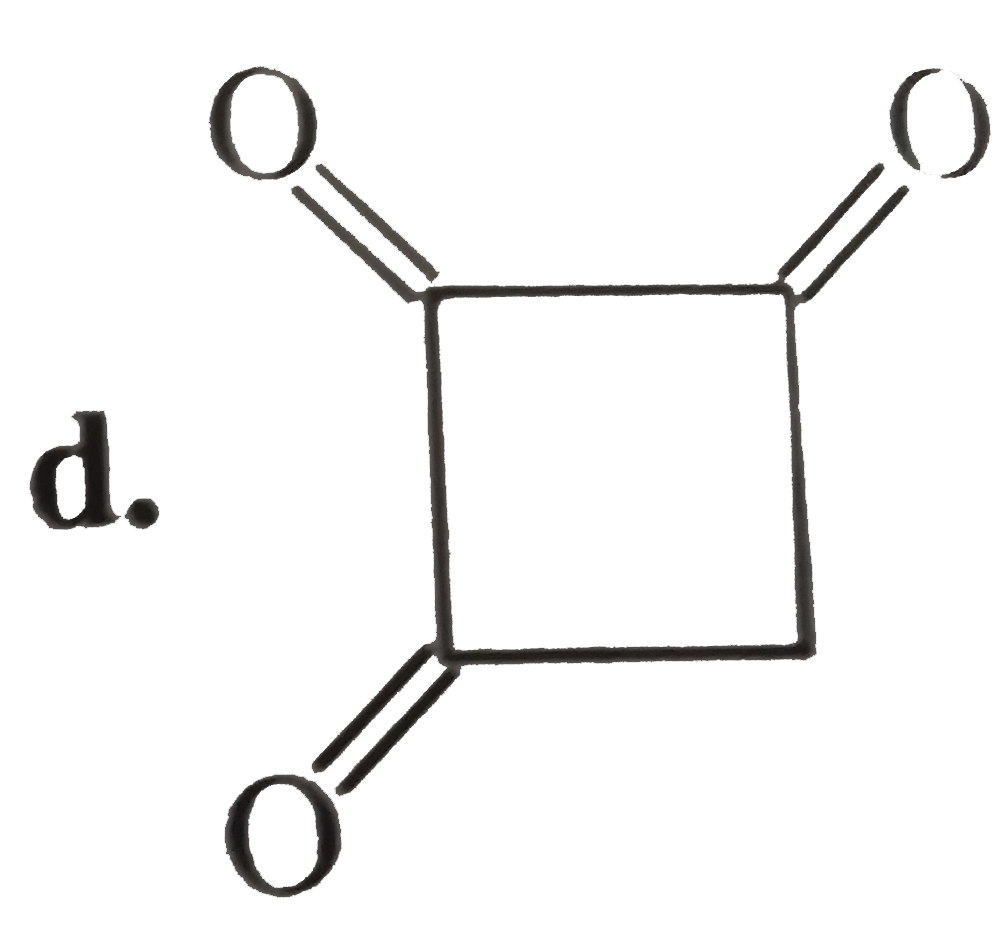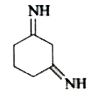Which of the following show stable or major form of tautomerism?




The correct Answer is:B, D
To determine which of the given compounds exhibit stable or major forms of tautomerism, we will analyze each compound step by step.
Step 1: Analyze Compound A
- Structure: Compound A does not have any alpha hydrogen atoms.
- Conclusion: Tautomerism requires the presence of alpha hydrogen atoms for the hydrogen to shift and form a new isomer. Since there are no alpha hydrogens, tautomerism is not possible for Compound A.
Step 2: Analyze Compound B
- Structure: Compound B has alpha hydrogen atoms.
- Tautomerism Process: The double bond will shift, and the alpha hydrogen will move to the oxygen atom, resulting in the formation of an alcohol.
- Conclusion: The resulting compound is stable, indicating that tautomerism occurs here and is a major form.
Step 3: Analyze Compound C
- Structure: Compound C also has alpha hydrogen atoms.
- Tautomerism Process: Similar to Compound B, the double bond shifts, and the alpha hydrogen moves to the oxygen.
- Stability Check: However, the resulting compound does not follow Hückel's rule (4n + 2) and is classified as anti-aromatic, making it unstable.
- Conclusion: Although tautomerism occurs, it leads to an unstable product.
Step 4: Analyze Compound D
- Structure: Compound D has multiple double bonds and alpha hydrogen atoms.
- Tautomerism Process: The double bonds shift, and the hydrogen atoms move to the oxygen, resulting in a structure with a negative charge and an OH group.
- Stability Check: The resulting compound exhibits extended conjugation, which is stable.
- Conclusion: Tautomerism occurs here and is stable.
Final Conclusion
- The compounds that show stable or major forms of tautomerism are Compound B and Compound D.
Summary of Results
- Stable Tautomerism:
- Compound B
- Compound D
- Unstable Tautomerism:
- Compound A (no tautomerism)
- Compound C (unstable due to anti-aromaticity)
- Structure: Compound A does not have any alpha hydrogen atoms.
- Conclusion: Tautomerism requires the presence of alpha hydrogen atoms for the hydrogen to shift and form a new isomer. Since there are no alpha hydrogens, tautomerism is not possible for Compound A.
- Structure: Compound B has alpha hydrogen atoms.
- Tautomerism Process: The double bond will shift, and the alpha hydrogen will move to the oxygen atom, resulting in the formation of an alcohol.
- Conclusion: The resulting compound is stable, indicating that tautomerism occurs here and is a major form.
- Structure: Compound C also has alpha hydrogen atoms.
- Tautomerism Process: Similar to Compound B, the double bond shifts, and the alpha hydrogen moves to the oxygen.
- Stability Check: However, the resulting compound does not follow Hückel's rule (4n + 2) and is classified as anti-aromatic, making it unstable.
- Conclusion: Although tautomerism occurs, it leads to an unstable product.
- Structure: Compound D has multiple double bonds and alpha hydrogen atoms.
- Tautomerism Process: The double bonds shift, and the hydrogen atoms move to the oxygen, resulting in a structure with a negative charge and an OH group.
- Stability Check: The resulting compound exhibits extended conjugation, which is stable.
- Conclusion: Tautomerism occurs here and is stable.
- The compounds that show stable or major forms of tautomerism are Compound B and Compound D.
- Stable Tautomerism:
- Compound B
- Compound D
- Unstable Tautomerism:
- Compound A (no tautomerism)
- Compound C (unstable due to anti-aromaticity)
Topper's Solved these Questions
- ISOMERISMBOOK - CENGAGE CHEMISTRY ENGLISHCHAPTER - ISOMERISMEXERCISE - Single correct answer type
13 Videos
- ISOMERISMBOOK - CENGAGE CHEMISTRY ENGLISHCHAPTER - ISOMERISMEXERCISE - Single correct answer type (Exercise)
65 Videos
- ISOMERISMBOOK - CENGAGE CHEMISTRY ENGLISHCHAPTER - ISOMERISMEXERCISE - (Linked Comprehension Type)Exercise
13 Videos
- IONIC EQUILIBRIUMBOOK - CENGAGE CHEMISTRY ENGLISHCHAPTER - IONIC EQUILIBRIUMEXERCISE - Archives Subjective
28 Videos
- NCERT BASED EXERCISEBOOK - CENGAGE CHEMISTRY ENGLISHCHAPTER - NCERT BASED EXERCISEEXERCISE - Chemical Equilibrium
73 Videos
Similar Questions
Knowledge Check
Which of the following form stable hemiketal?
APh−O∣∣C−PhBHO−(CH2)3−O∣∣C−CH3CHOH2C−O∣∣C−(CHOH)3−CH2OHDHO−CH2−(CH2)4−O∣∣C−CH3Which of the following is the least stable?
A B
B C
C D
D
Which of the following species is not stable?
A[Sn(OH)6]2−B[SiCl6]2−C[SiF6]2−D[GeCl6]2−
Which among the following show tautomerism ?
View SolutionWhich of the following is thermally stable :
View SolutionWhich of the following cannot show tautomerism ?
View SolutionWhich of the following can show tautomerism here.
View SolutionWhich of the following will form stable hydrate ?
View Solution
